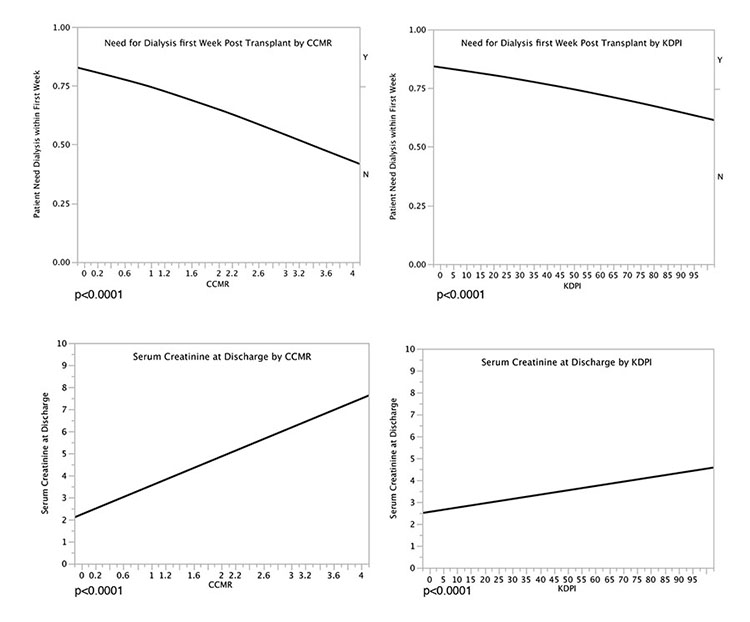Donor/Recipient Matching Using the Creatinine Clearance Match Ratio (CCMR) Is Superior to the Kidney Donor Profile Index (KDPI) Predicting Early but Not Late Outcomes for Deceased Donor Kidney Transplantation.
Transplant Surgery, University of California, San Diego, CA
Surgery, Royal College of Surgeons, Dublin, Ireland
Meeting: 2017 American Transplant Congress
Abstract number: A97
Keywords: Kidney transplantation, Renal function
Session Information
Session Name: Poster Session A: Deceased Donor Issues I: Allocation, KDPI and Recipient Selection
Session Type: Poster Session
Date: Saturday, April 29, 2017
Session Time: 5:30pm-7:30pm
 Presentation Time: 5:30pm-7:30pm
Presentation Time: 5:30pm-7:30pm
Location: Hall D1
A Creatinine Clearance based Donor/Recipient matching strategy (CCMR) was developed to better optimize metabolic demand of the recipient with donor kidney function. Prior work in the ECD door population demonstrated CCMR based matching to be associated with better outcomes as compared to size matching or measures of kidney quality alone such as the KDPI. It was hypothesized that this strategy could be utilized in a wider group of donor recipient matches including both Standard Criteria and Extended Criteria donors and the comparison was made to the current standard measure Kidney Donor Profile Index (KDPI). Using the Scientific Registry of Transplant Recipients(SRTR) database outcomes of 121,394 adult to adult kidney transplantations since the year 2000 was performed. The CCMR ratio is calculated by dividing the Cockcroft-Gault estimated creatinine clearances of the recipients by the donor. Short term outcomes of graft function including Creatinine at discharge and delayed graft function were assessed as well as long term graft survival. CCMR demonstrated better ability to predict short term graft outcomes but was equivocal to KDPI for long term graft outcomes.
In summary, when analyzing all categories of deceased kidney donors in sum, the additional information provided by CCMR gives insight into expected rates of delayed graft function but provides little additional data to the KDPI when predicting long term graft survival.
CITATION INFORMATION: Halldorson J, Karimi N. Donor/Recipient Matching Using the Creatinine Clearance Match Ratio (CCMR) Is Superior to the Kidney Donor Profile Index (KDPI) Predicting Early but Not Late Outcomes for Deceased Donor Kidney Transplantation. Am J Transplant. 2017;17 (suppl 3).
To cite this abstract in AMA style:
Halldorson J, Karimi N. Donor/Recipient Matching Using the Creatinine Clearance Match Ratio (CCMR) Is Superior to the Kidney Donor Profile Index (KDPI) Predicting Early but Not Late Outcomes for Deceased Donor Kidney Transplantation. [abstract]. Am J Transplant. 2017; 17 (suppl 3). https://atcmeetingabstracts.com/abstract/donorrecipient-matching-using-the-creatinine-clearance-match-ratio-ccmr-is-superior-to-the-kidney-donor-profile-index-kdpi-predicting-early-but-not-late-outcomes-for-deceased-donor-kidney-transpl/. Accessed December 30, 2025.« Back to 2017 American Transplant Congress
